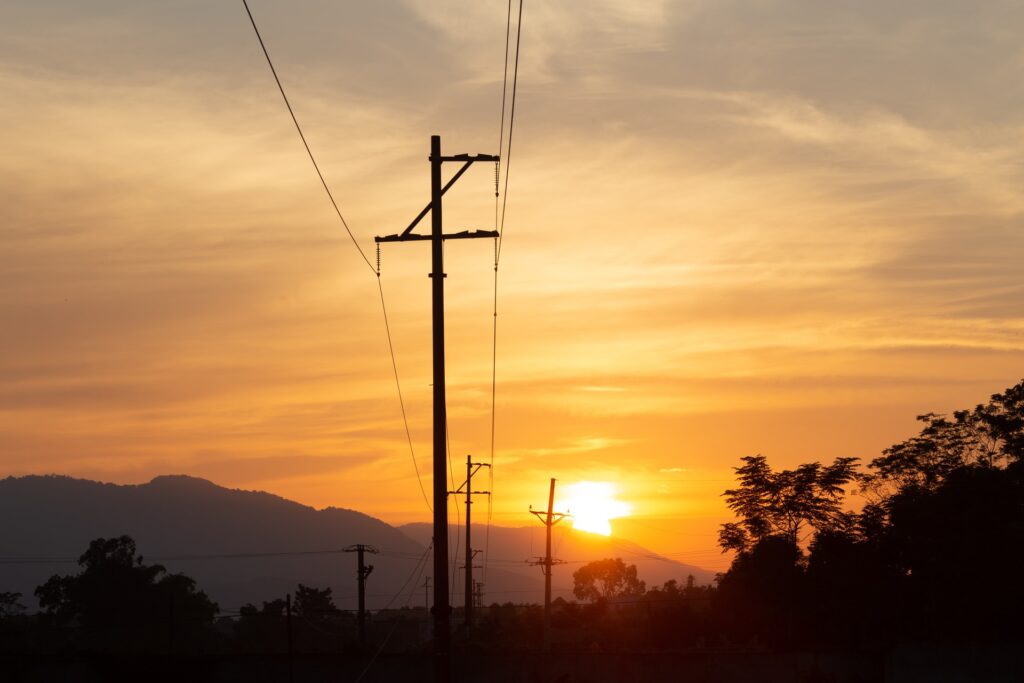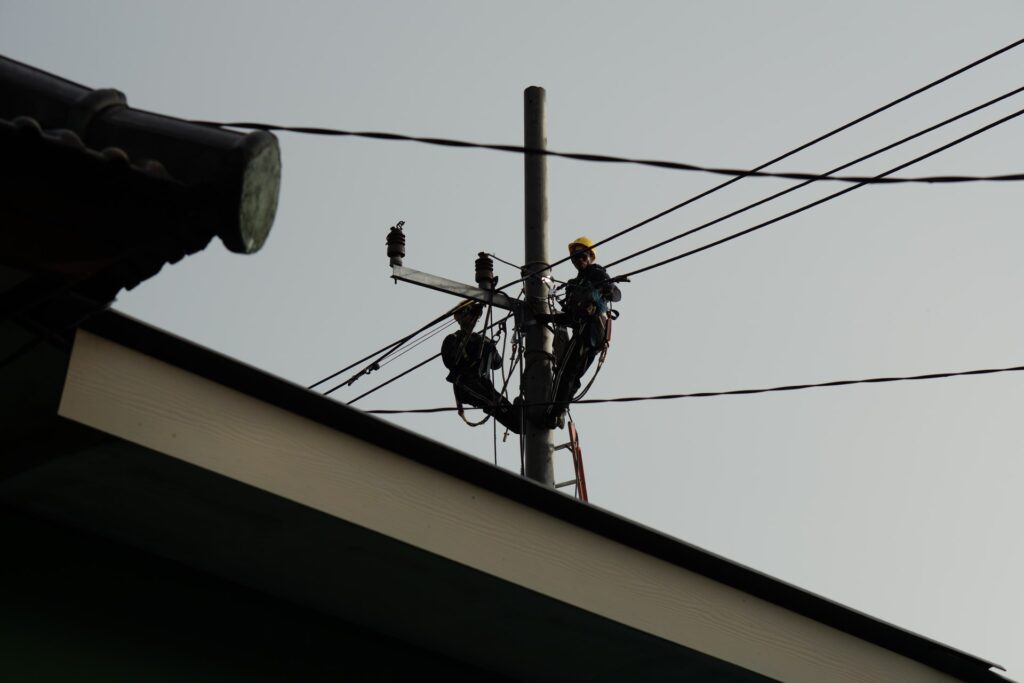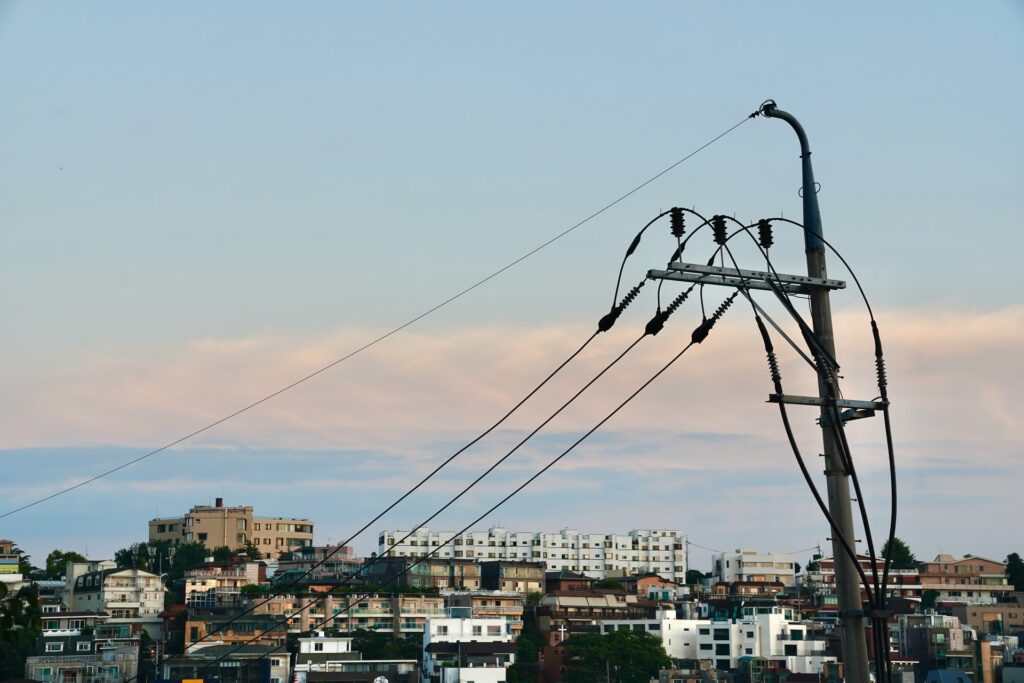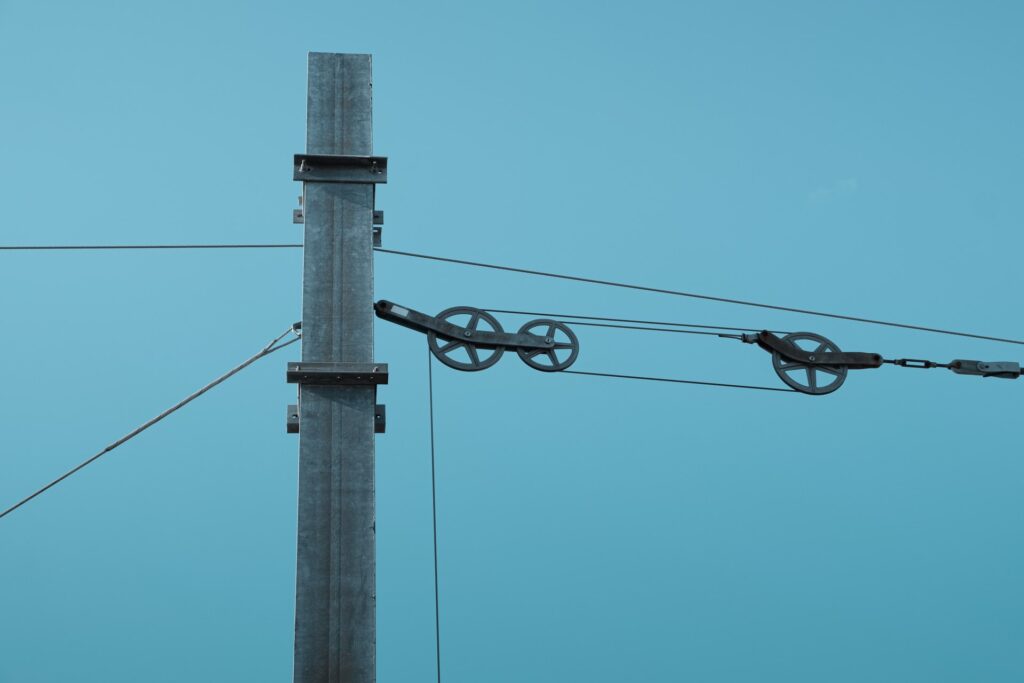If you want to know more details of overhead line construction and get to know more on power line hardware, you should know how the electricity transmit to your home so that you can watch TV shows or charge for your phone through socket. Then the topic you can not avoid is electrical transmission tower for high-voltage line transmission as well as utility pole for low-voltage power line distribution. Regarding to our today’s topic, the theme is brief introduction on utility poles.

What is utility pole?
A utility pole is a segment or post normally put together with wood used to help above electrical cables and different other public utilities, like electrical link, fiber optic link, and related hardware, for example, transformers and streetlamps. It very well may be alluded to as a transmission shaft, utility pole, telecommunication post, power shaft, hydro pole, telephone pole, or broadcast post, contingent upon its application. A Stobie pole is a multi-reason pole made of two steel joists held separated by a chunk of cement in the center, by and large tracked down in South Australia.
Electrical wires and links are steered above on utility poles as an economical method for keeping them protected starting from the earliest stage far removed of individuals and vehicles. Utility poles can be made of wood, metal, cement, or composites like fiberglass. They are utilized for two distinct kinds of electrical cables: sub transmission lines, which convey higher voltage power among substations, and circulation lines, which disperse lower voltage capacity to clients.
The principal shafts were utilized in 1843 by transmit pioneer William Fothergill Cooke, who utilized them on a line along the Great Western Railway. Utility poles were first utilized during the nineteenth hundred years in America with transmit frameworks, beginning with Samuel Morse, who endeavored to cover a line among Baltimore and Washington, D.C. be that as it may, moved it over the ground when this framework demonstrated flawed. Today, underground circulation lines are progressively utilized as an option in contrast to utility poles in private areas, because of posts’ apparent grotesqueness, as well as security worries in regions with a lot of snow or ice develop.

The usage of utility poles
Utility posts are usually used to convey two sorts of electric power lines: dissemination lines (or “feeders”) and sub transmission lines. Dispersion lines convey power from neighborhood substations to clients. They by and large convey voltages from 4.6 to 33 kilovolts (kV) for distances up to 30 miles, and incorporate transformers to step the voltage down from the essential voltage to the lower optional voltage utilized by the client. A help drop conveys this lower voltage to the client’s premises.
Sub-transmission lines convey higher voltage power from territorial substations to neighborhood substations. They generally convey 46 kV, 69 kV, or 115 kV for distances up to 60 miles. 230 kV lines are many times upheld on H-molded towers made with a few shafts. Transmission lines conveying voltages of over 230 kV are typically not upheld by shafts, however by metal arches (known as transmission towers in the US).
For monetary or pragmatic reasons, for example, to save space in metropolitan regions, a circulation line is much of the time carried on similar shafts as a sub transmission line however mounted under the higher voltage lines; a training called “underbuild”. Media transmission links are normally carried on the very posts that help electrical cables; shafts partook in this style are known as joint-use shafts, however may have their own committed shafts.

The materials of making utility poles
Most utility posts are made of wood, pressure-treated with an additive for security against decay, parasites and bugs of some sort or another. Southern yellow pine is the most generally involved species in the United States; in any case, numerous types of long straight trees are utilized to make utility poles, including Douglas fir, jack pine, lodgepole pine, western red cedar, and Pacific silver fir.
Generally, the additive utilized was creosote, yet because of natural worries, options, for example, pentachlorophenol, copper naphthenate and borates are becoming broad in the United States. In the United States, principles for wood additive materials and wood conservation processes, alongside test rules, are set by ANSI, ASTM, and American Wood Protection Association (AWPA) particulars. Notwithstanding the additives, wood posts rot and have an existence of roughly 25 to 50 years relying upon environment and soil conditions, subsequently requiring customary review and medicinal additive treatments. Woodpecker harm to wood shafts is the main source of shaft disintegration in the U.S.
Other normal utility post materials are steel and cement, with composites, (for example, fiberglass[citation needed]) additionally turning out to be more predominant. One specific protected utility shaft variation utilized in Australia is the Stobie shaft, comprised of two vertical steel posts with a section of cement between them.
In southern Switzerland along different lakes, utility poles are made of rock. Beginning in the mid 1900s, these 18-foot (5 m) posts were initially utilized for broadcast wires and later for phone wires. Since they are made of stone, the posts last indefinitely.

Attachment hardware by pole type
- Wood poles
Top of a 400 V shaft in Switzerland. In Europe, separators ordinarily were joined straightforwardly at the post.
The conventional wood post material gives extraordinary adaptability during position of equipment and link device. Openings are effortlessly penetrated to fit the specific equipment needs and prerequisites. Also, latches, for example, slacks and screws are effectively applied to wood designs to help outside plant (OSP) device.
- Non-wood poles
There are three primary non-wood post materials and designs on which the connection equipment might be mounted: cement, steel, and fiber-supported composite (FRC). Every material has natural attributes that should be considered during the plan and production of the connection equipment.
Substantial posts
A few power poles made of cement
The most far and wide utilization of substantial posts is in marine conditions and beach front zones where astounding consumption opposition is expected to lessen the effect of ocean water, salt haze, and destructive soil conditions (e.g., swamp). Their significant burden additionally assists the substantial shafts with opposing the high breezes conceivable in beach front regions.
The different plans for substantial shafts incorporate tightened designs and round posts made of strong cement; pre-pushed concrete (turned cast or statically cast); and a cross breed of cement and steel.
The boring of introduced substantial shafts isn’t possible. Clients might wish to have the connection equipment cast into the substantial during the shaft fabricate. Because of these functional challenges, grouped equipment has turned into the more famous means to connect link plant to substantial posts.
Plan standards and prerequisites for substantial shafts can be gotten from different industry reports including, yet not restricted to, ASCE-111, ACI-318, ASTM C935, and ASTM C1089.
Steel poles
Steel posts can give benefits to high-voltage lines, where taller shafts are expected for improved clearances and longer range prerequisites. Cylindrical steel posts are commonly produced using 11-check stirred steel, with thicker 10-or 7-measure materials utilized for a few taller shafts due to their higher strength and unbending nature. For tall pinnacle type structures, 5-measure materials are utilized.
In spite of the fact that steel posts can be penetrated nearby with an annular bore or standard turn drill, it’s anything but a suggested practice. Likewise with substantial posts, bolt openings could be incorporated into the steel shaft during produce for use as broad connection focuses or puts for moves toward be dashed into the shaft.
Welding of connection equipment or connection edges to steel posts might be a doable substitute way to deal with assistance give dependable connection focuses. Nonetheless, functional and down to earth risks of welding in the field might make this cycle bothersome or uneconomical.
Steel posts ought to meet industry determinations, for example, TIA/EIA-222-G, Structural Standard for Antenna Supporting Structures and Antennas (current); TIA/EIA-222; Structural Standards for Steel; and TIA/EIA-RS-222, or an identical necessity set to assist with guaranteeing a hearty and great quality shaft is being utilized.
Fiber-built up composite (FRC) poles
FRC shafts cover a group of post materials that join fiberglass (fiber) strength individuals with a cross-connected polyester tar and various compound added substances to deliver a lightweight, climate safe design. FRC posts are empty and like the rounded steel shafts, with a run of the mill wall thickness of 1/4 to 1/2 inch with an external polyurethane covering that is ~0.002-inch slight.
Similarly as with the wide range of various non-wood shafts, FRC posts can’t be mounted with the customary climbing equipment of snares and gaffs. FRC shafts can be pre-penetrated by the producer, or openings can be bored nearby. Connections utilizing slack bolts, teeth, nails, and staples are inadmissible for FRC posts. Through-bolts are utilized rather than slack bolts for most extreme clinging to the shaft and to try not to relax of equipment.
The significant business archives covering FRC shafts include: ASTM D4923, ANSI C136.20, OPCS-03-02, and Telcordia GR-3159, Generic Requirements for Fiber-Reinforced Composite (FRC), Concrete, and Steel Utility Poles.


